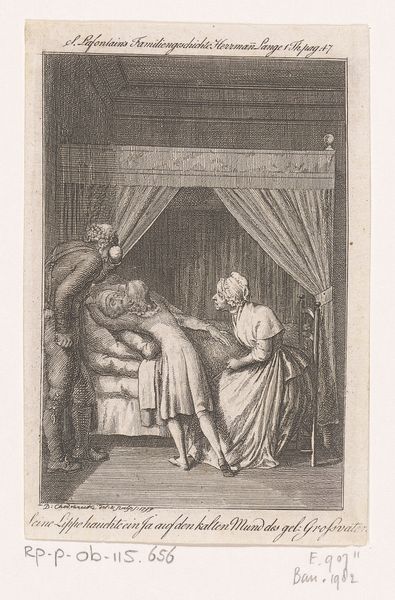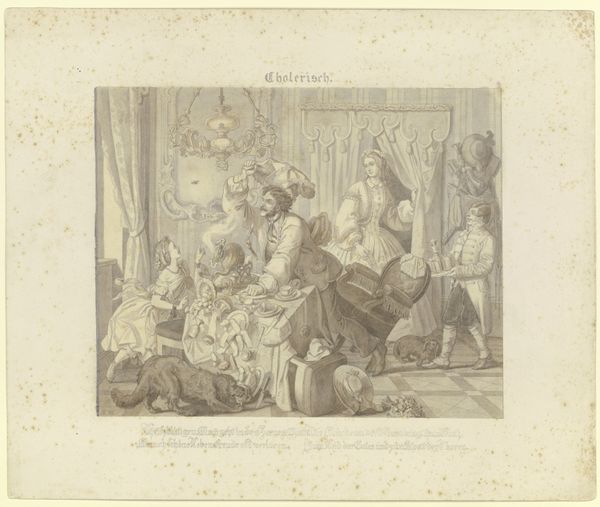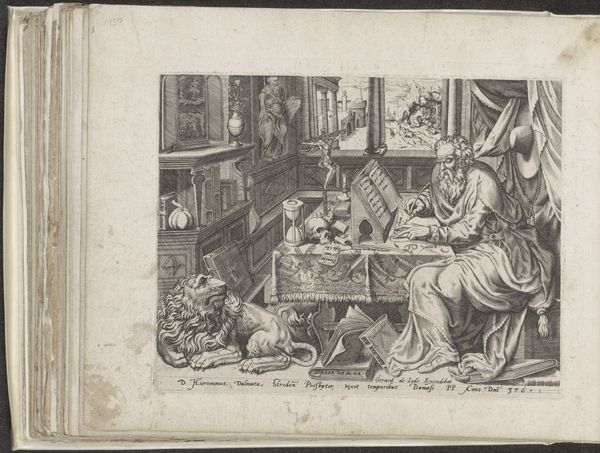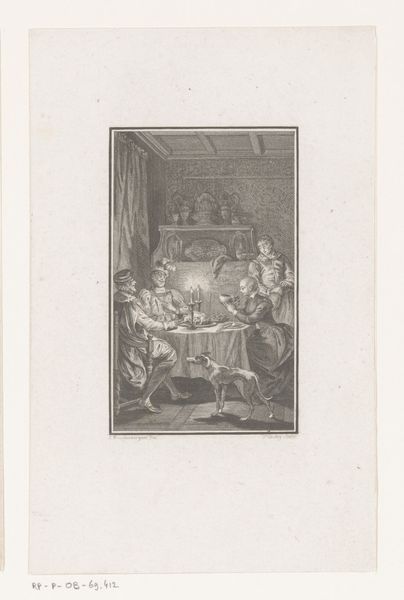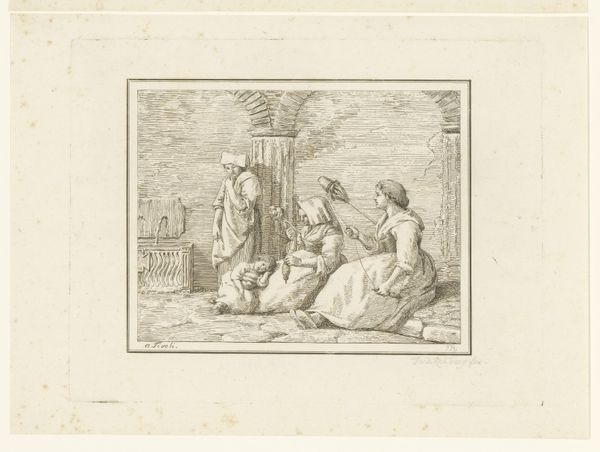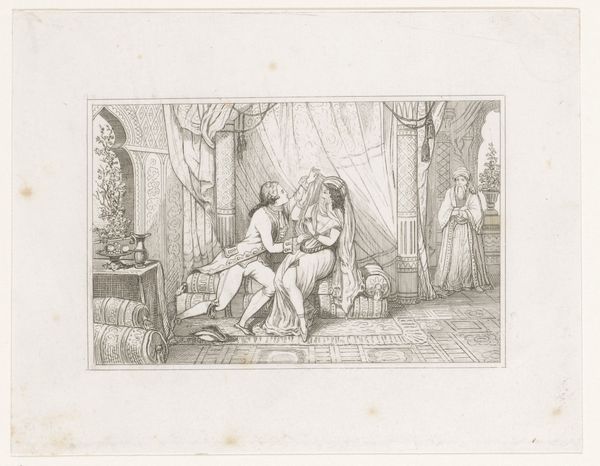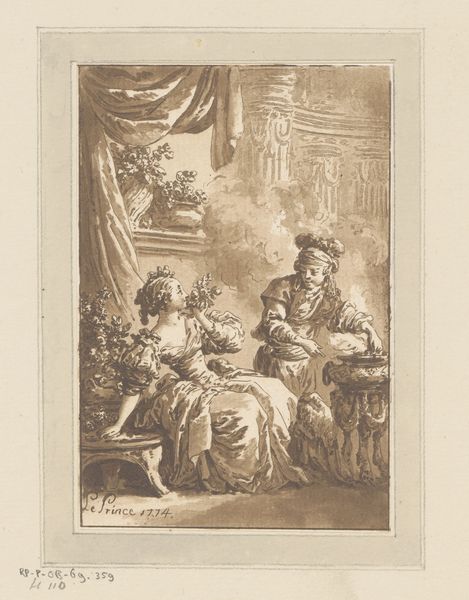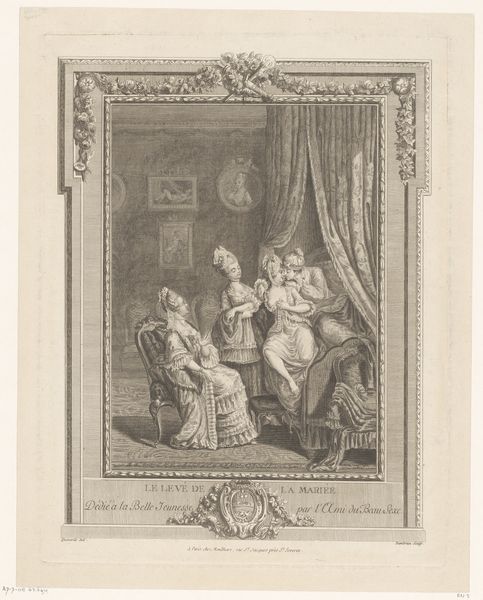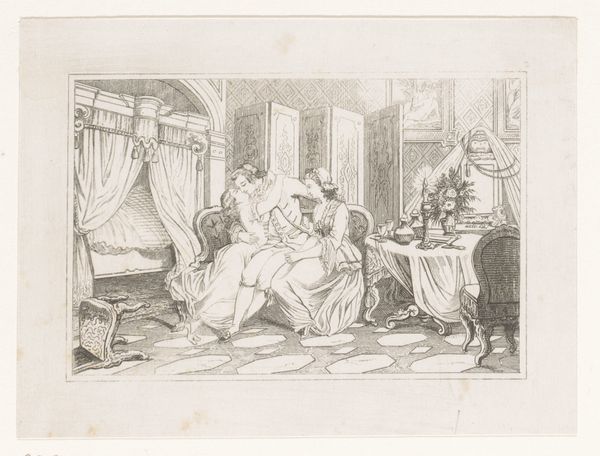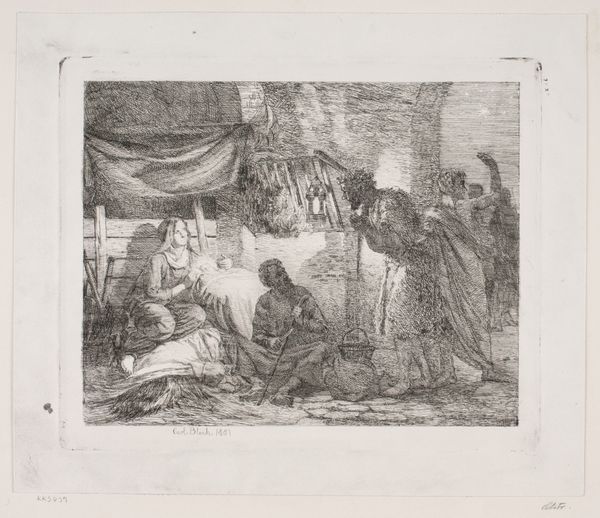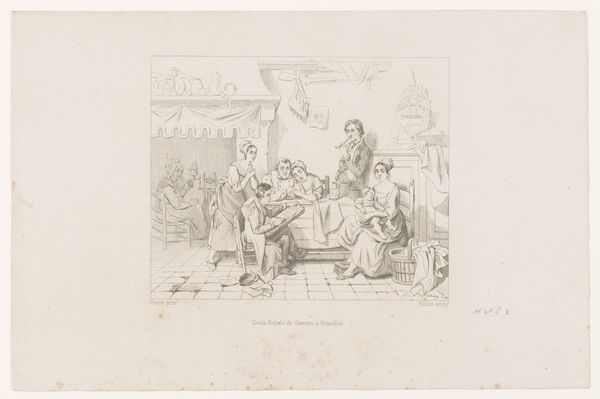
Dimensions: height 110 mm, width 146 mm
Copyright: Rijks Museum: Open Domain
Editor: This drawing, “Vrouw brengt drinken naar een man gelegen op een bed,” is attributed to Auguste Numans and was likely created between 1833 and 1880. It's a detailed sketch in pen and pencil, depicting a woman bringing a drink to a man in bed. The composition feels rather formal and staged to me. What do you see in this piece? Curator: I see a complex snapshot of 19th-century domestic power dynamics. We see a genre scene, which is seemingly harmless, but let's consider it through a feminist lens. What labor, often unacknowledged, is represented here? The woman is performing a service. Does her body language convey willingness, obligation, or something else? Editor: I guess I hadn't really thought about it in terms of power. I just saw it as someone caring for another person. Curator: That's understandable, and that may also be true. But even acts of care exist within societal structures. Who gets cared for, and who provides that care? Consider the man's recumbent position, contrasting with the woman’s active stance. How might this imagery perpetuate certain gendered expectations within their social context? Editor: That makes me see it differently. The room itself also feels symbolic somehow, with its elaborate furnishings. Does that relate to anything? Curator: Absolutely. The trappings of wealth are relevant here. It signifies the socio-economic context that allows for such a scene. This setting underscores ideas about privilege, and dependence. These weren’t neutral portrayals. Art serves cultural values, and also reflects how they are assigned, consciously or not. Editor: So by unpacking those values we can read more into what's represented. I hadn't thought of it as that multi-layered. Curator: Exactly. By critically engaging with such artworks, we can develop nuanced views about identity, gender, and power. And also see the connection with how such themes remain relevant to us today.
Comments
No comments
Be the first to comment and join the conversation on the ultimate creative platform.
